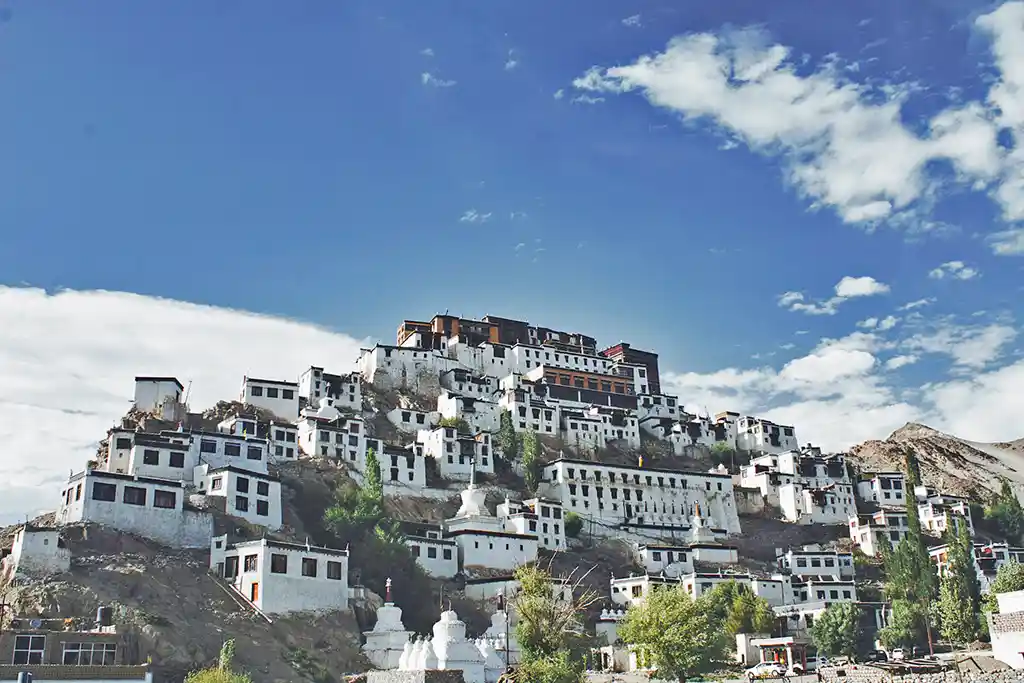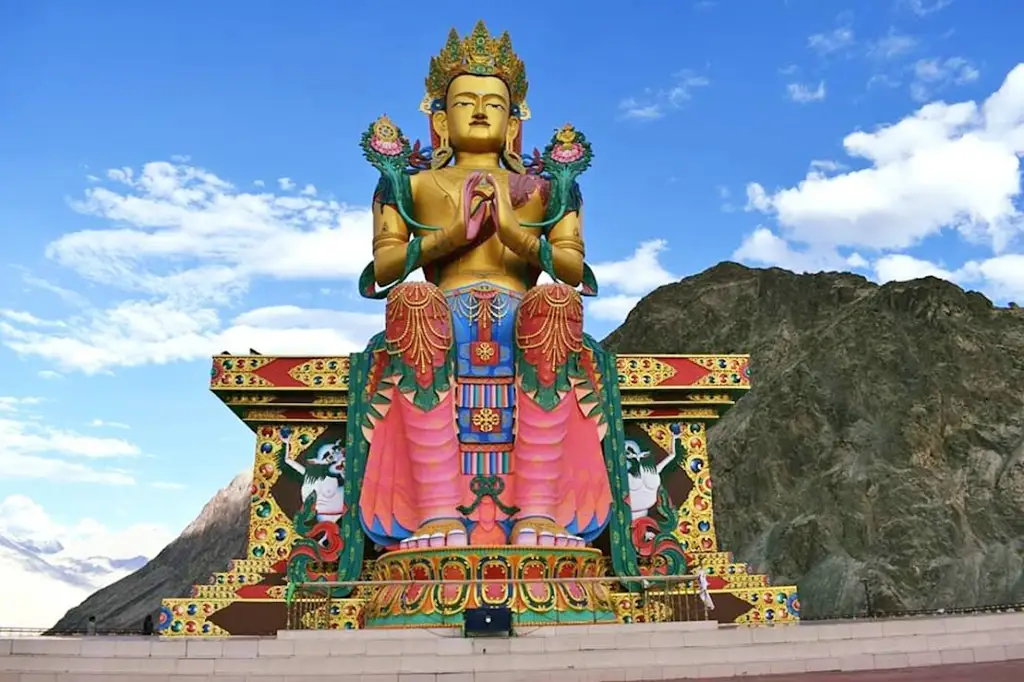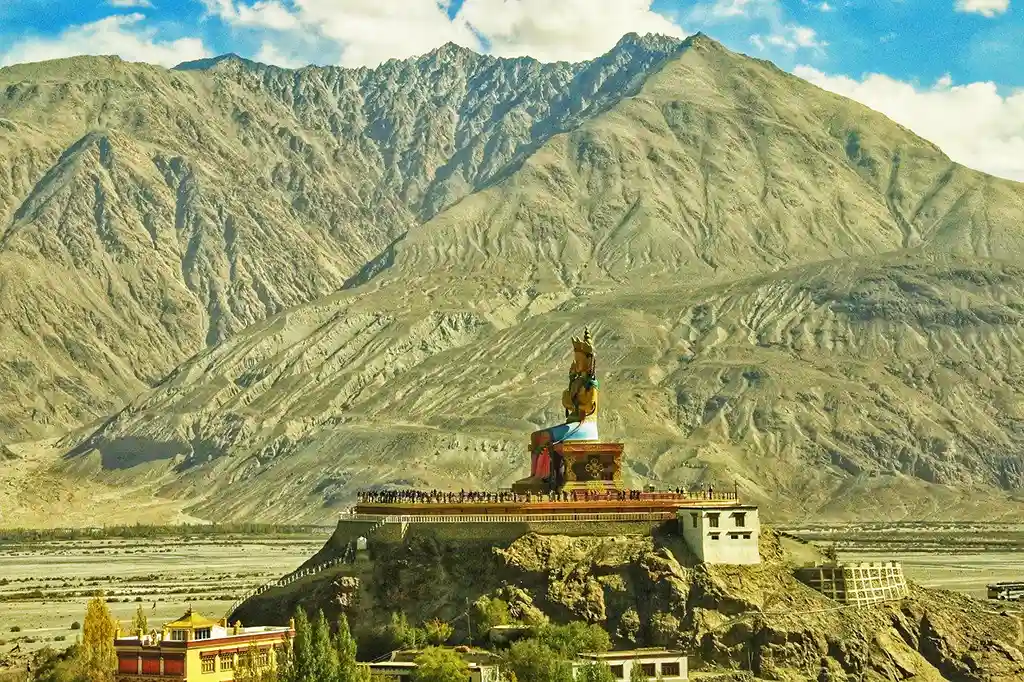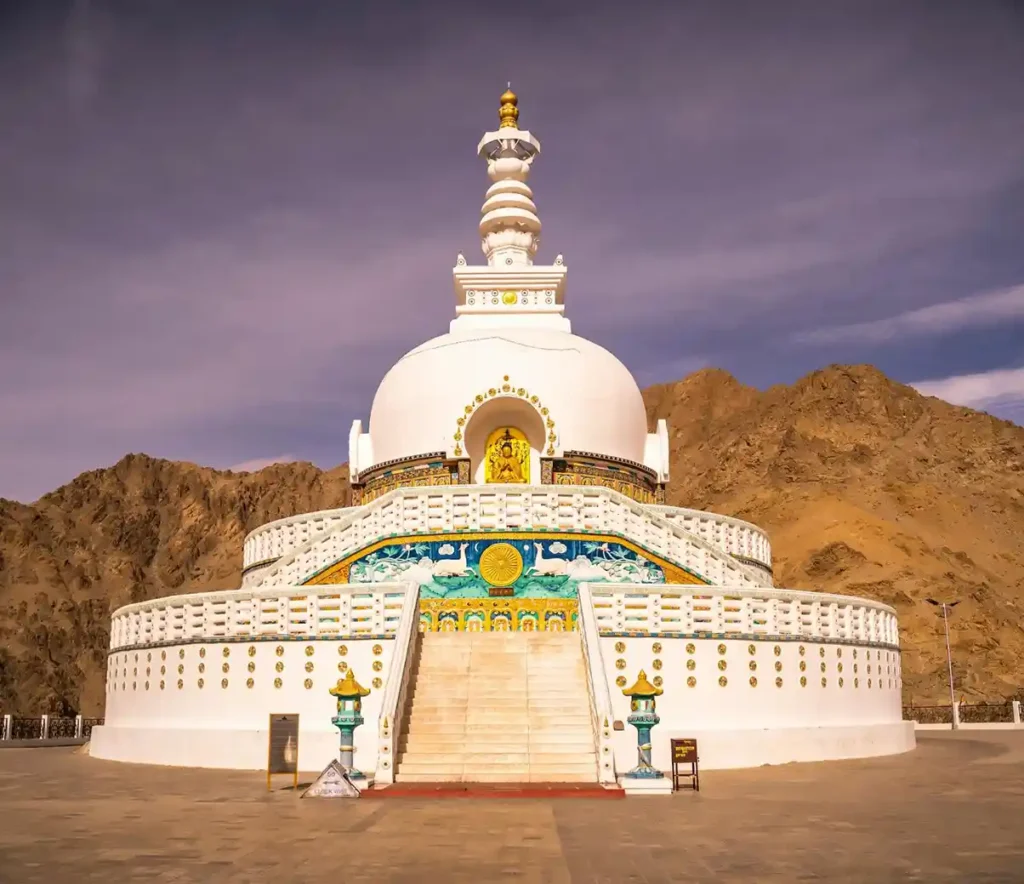This article is about the spiritual destinations in Ladakh that you can visit during your trip – A cultural and spiritual experience trip to Ladakh, India.
Ladakh, India’s highest plateau, is that one destination, that every Indian yearns to visit at least once in their life.
A union territory of India since 2019, it was previously a part of the Indian state of Jammu and Kashmir.
Ladakh has long been popular among the visitors. With fewer restrictions now, tourism in Ladakh will grow faster.
However, this can lead to over-tourism and negatively impact the environment too. This is why, spiritual tourism, community tourism and eco-tourism must be practiced.
Ladakh is the land of Tibetan Buddhism. Himalayan food, scenic hamlets near Leh, and stunning monasteries – isn’t it the perfect Ladakh cultural experience?
Watch this video by the Department of Tourism – Ladakh on sustainable tourism in the UT –
Besides that, experience the calmness of Pangong Lake and Tso Moriri, do river rafting and offbeat treks, or go camel riding in the Nubra Valley – Ladakh has it all.
With Ladakh tour packages one can explore all the beautiful places in Leh Ladakh.

Here are 9 Spiritual Destinations in Ladakh you must visit –
1. Red Maitreya Temple
Red Maitreya Temple is a commonly frequented temple in Leh and is at the top of the list of well-known temples in the area. This temple also has exquisite murals precisely decorated on it.
You will be transported back to a more sacred period upon viewing the images of Avalokiteshvara, Mahakala, and Buddha. It was built during the reign of King Tragspa Bumde.

This temple was severely damaged during the Dogra invasion, but in the 1950s, Anca Nicolaescu repaired it. The murals of Shakyamuni on the temple walls will also astound you.
The mid-15th century was when the Red Maitreya temple was built. Working with the University of Applied Sciences Erfurt, the Tibetan Heritage Fund discovered and preserved the remnants of the ancient murals between 2006 and 2008.
Read about the THF’s efforts in the preservation and recovery of the murals.
You can read about the preservation and recovery efforts of the Tibetan Heritage Fund in this article.
Here’s the google map location of Red Maitreya Temple.
You can explore all these places through a Ladakh bike trip.
2. Vajra Bhairav Shrine
Vajra Bhairav Shrine is situated in Spituk town of the Indus River Valley, about ten kilometres from Leh town.
The shrine is sacred and dedicated to a tantric deity belonging to the Gelugpa sect. The deity, said to have magical abilities, is typically housed in a chamber. The public can access the shrine only once a year and is restricted on other days.
The shrine’s walls are adorned with artwork that dates back 600 years.
3. Lamokhang Temple
Another important temple in Thiksey Monastery is the Lamokhang Temple. Only men are permitted to enter this shrine, the repository of Tengyur and Kangyur scriptures.
Buddha’s teachings are inscribed on enormous pillars and large stupas and Mani walls. The children selected to be future Lamas are taught in a room at the temple too.
The approved dwelling of the monastery’s incarnate Lama is located on the top floor. The monastic complex here has a few white-washed huts as well.
4. Tara Temple
Tara Temple, another temple in the Thiksey Monastery – this shrine was established in reverence to Goddess Tara. It is decorated with twenty-one representations of the goddess set inside a wooden shelf coated in glass.
Here within the temple complex, there is a courtyard devoted to other Gudian deities as well. This Chi-Khang is renowned for housing a picture of Buddha and two of his followers beside the god Yamantaka.
The wall painting with images of the Buddha, Padmasambhāva, Tsong Khapa, Palden Lhamo, and Mahakala will astound you.
5. Diskit Gompa
Diskit Gompa, named after Diksit village, is the grandest and oldest monastery in the Nubra Valley of Ladakh. It dates to the fourteenth century.

The Gompa is also known by the name – Deskit Gompa. The enormous 106ft Maitreya Buddha monument at its centre was consecrated by His Highness the Dalai Lama in 2010.
Situated on a hill with views of the Shyok River plains, the monastery provides a spectacular wide-angle view of the Nubra Valley. Changzen Tserab Zangpo in the fourteenth century.
You can visit the Gompa from 7 am to 1 pm and from 2 pm to 7 pm.
The best time to visit would be from July to September when the weather is clear and the roads are good. In winter, the roads mostly remain closed due to heavy snowfall.
However, if you visit the Dosmoche Festival celebrated at the Monastery in February every year, you can have the best cultural experience.
6. Matho Temple
Situated roughly 26 kilometres from Ladakh, Matho Gompa is renowned for housing a monastery that was established in the 15th century by Lama Dugpa Dorje. The village Gompa is named after Matho Village.
The Saskya Order is the owner of this monastery. Celebrated on the 14th and 15th day of the first Tibetan month every year, the Matho Nagrang festival is a perfect time to have a unique cultural experience.
The celebration includes performances of holy dances by the Rongtsan, two oracles, and monks.
Watch this video on YouTube about Matho Nagrang Festival by India in Motion, my favourite storyteller –
7. Shanti Stupa
One of Leh’s main destinations is Shanti Stupa. It is on a mountain and offers sweeping views of the city and surrounding area. It is located at an altitude of 13,999 ft. Since it is a high-altitude area, acclimatisation is essential for exploring in and around Ladakh.
This stupa was constructed by a Japanese Buddhist monk – Bhikshu Gyomyo Nakamura, as a component of the Peace Pagoda Mission that contains the Buddha’s bones.

The 14th Dalai Lama himself enshrined the Buddha’s relics at the base of the Shanti Stupa.
The sunrise or sunset view at Shanti Stupa is stunningly beautiful – the best time to visit it. The sunset can be witnessed here as people can visit the Stupa from 5 am onwards. It closes by 9 pm. So, don’t miss the sunset either.
8. Alchi Chos Khor Temple
Rinchen Sangpo established Alchi Chos Khor Temple. It is one of the oldest Buddhist temples in Ladakh to bring back Tibetan Buddhism.
The temple is decorated with pictures of Buddha, Bodhisattva, Apsara, Gandahrava, and other figures.
This monastery uniquely preserves artwork from the 10th century and also showcases paintings created by Buddhist artisans.
9. Serzang Temple
Serzang Temple is situated in the Basgo Village in Leh. From the airport in Leh, it is at a distance of about 40 km.
It was built in the 17th century using both copper and gold and is easily accessible from the Leh-Srinagar Highway. It is at a distance of 40 km from Leh.
A 30-foot-high copper-gilded Maitreya Buddha Statue, and murals by Marpa, Tilopa, Mila Raspa, and Naropa can be found in this temple.
Buddha statues and pictures of adherents of the Red Hat sect adorn the temple walls.
Conclusion
While we always travel for a touristy experience, these spiritual destinations in Ladakh amidst the surrounding mountains will surely be a heavenly experience.
Travelling to the monasteries and temples shared above, such as the Shanti Stupa, Matho Temple, and the calm Pangong Lake – is a complete cultural, spiritual and nature experience.
I hope this article helps you plan your spiritual trip to Ladakh.
Featured Photo Credits – Ananya Bilimale
